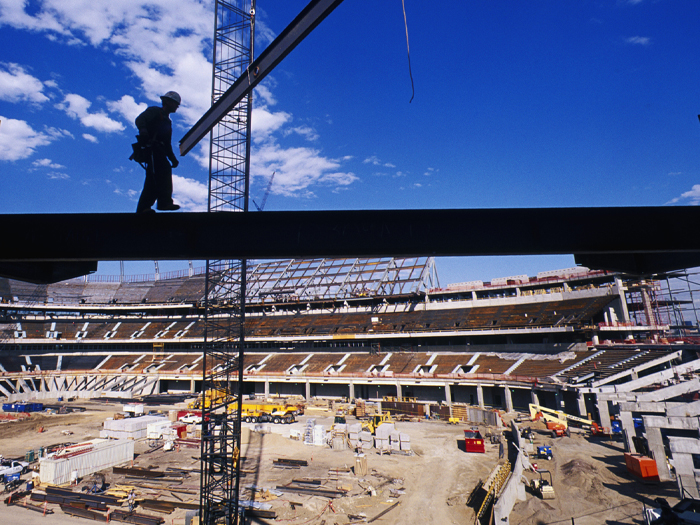7 Construction and Environmental Liability Coverage Trends as Identified by RT Specialty

After years of a flat market, carriers are finally boosting premiums for contractors professional liability coverage, according to a 2022 market update by Chicago-based wholesale brokerage firm RT Specialty.
That was one of the more prominent conclusions in the firm’s update, which examines the latest trends in environmental and construction-related professional liability insurance, according to Joey Nawa, vice president of RT Specialty’s environmental and construction professional practice.
Carriers had been pushing rates lower to boost market share, Nawa said. But in the face of significant claims, as well as a general increase in premiums across the board, leading insurers are turning the corner on contractor’s professional liability.
Carriers across the marketplace have predicted that contractor’s professional liability rates could rise between 2% and 5%, though general economic inflation could drive rates higher, Nawa said.
“As a result of inflation, it may be more costly to defend a claim. If the cost to defend a claim increases, the cost to purchase an insurance policy may likewise increase.”
RT Specialty’s update also anticipates an uptick in claims this year across the basket of policies covered in the update.
In addition to contractors professional liability, they include pollution liability, pollution legal liability, architects and engineers professional liability, owners protective professional indemnity and real estate developers professional liability.
Demand for the products is expected to rise this year as construction activity rebounds from the effects of the COVID-19 pandemic.
However, higher levels of activity can potentially create greater exposure, Nawa said.
The risks are compounded by the general labor shortage, which could mean contractors and designers are leaning on less-skilled, less-experienced workers requiring heightened oversight and compressed timelines. Supply chain challenges, meanwhile, can shorten the time frame for getting projects done.
“The risk manager portion of my brain would say, depending on the particular facts and circumstances of the insured, value in these coverages may only escalate with the economy and labor market in their current state,” Nawa said.
Contractors also face rising environmental liabilities, particularly as regulators focus on pollutants such as PFASs and PFOAs, so-called forever chemicals that do not break down in nature, Nawa said.
Many project owners increasingly require coverage, he added.
Here is a closer look at RT Specialty’s forecast for each coverage line.
1) Contractors Pollution Liability
New carriers are expected to enter the market for the policies, which cover pollution conditions arising from contracting operations performed by or on behalf of the insured party.
The result should be stable rates for companies with clean loss reports.
In 2021, some carriers added exclusions for communicable diseases on top of existing restrictions on coverage for mold and bacteria. But some carriers did not, the report said.
2) Pollution Legal Liability
Demand for the policies has soared as the U.S. economy emerges from the pandemic, according to RT Specialty. The $1 trillion infrastructure bill signed into law last year will only spur greater demand.
Policy terms are unlikely to change in 2022 but some sectors could face greater scrutiny from underwriters. They include industrial, hospitality, habitational, health care and energy.
3) General Liability/Pollution Legal Liability
The combined policies are designed for chemical manufacturers, distributors, waste management facilities and other manufacturers of environmental products such as storage tanks, pressure vessels, pumps, valves and pollution control equipment.
The market for the policies tightened in 2021 due to the emergence of new contaminants, rising litigation, costly natural disasters and the overall impact of COVID-19.
Insurers are expected to respond with more exclusionary endorsements related to pollutants such as PFASs.
4) General Liability/Contractors Pollution Liability/Professional Liability
The combined policies are tailored to the needs of environmental contractors, waste transporters, environmental consultants and contractors in the oil, gas and energy sectors.
Many carriers have adopted a conservative underwriting approach to the policies, according to RT Specialty.
And that is expected to continue into 2022.
Premiums, meanwhile, could rise 5% to 25%, depending on the degree of exposure and line of coverage, RT Specialty added.
5) Architects and Engineers Professional Liability
Rates had been falling for years for architects and engineers professional liability. While some careers have begun raising premiums in select segments, the market overall is expected to remain stable, according to RT Specialty.
Areas where the market may continue to tighten include project-specific professional coverage, coverage extensions for cyber and privacy liability and firms specializing in geotechnical, structural and civil engineering.
Carriers also are hesitant when it comes to firms active in residential design, particularly for condominiums and single-family homes, Nawa said.
“It’s really tough for those companies to meet the very high demands of their clientele and very often it leads to claims under their insurance policies.”
6) Owners Protective Personal Indemnity
The policies gained popularity in 2021 as a lower-cost alternative to professional liability policies for insuring catastrophic errors in the performance of design and other professionals, according to RT Specialty.
The firm expects the product to continue attracting interest this year as markets tighten and rates rise for traditional professional liability products.
Rates for owners protective personal indemnity policies should remain competitive, the firm added.
7) Real Estate Developers Professional Liability
The policies combine features of professional liability insurance for design professionals, contractors, real estate professionals and owners, according to RT Specialty.
Spurring demand in 2022 could be a proliferation of requirements from lenders and investors seeking to mitigate risk.
Buyers, however, should be aware of coverage disparities among policies, RT Specialty said. The firm also suggested paying attention to how carriers respond to claims.
Like businesses in many other industries, insurers may often be short-handed, Nawa said.
“The amount of turnover that we have seen has really caused things to slow down in terms of a servicing standpoint.”
The slowdown is, in many instances, impacting claims but also proofs of insurance, which contractors typically need before setting foot on a job site, Nawa said. &










